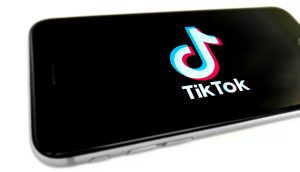Canada’s advertising elite converged yesterday on picturesque Niagara-on-the-Lake for Future Flash, a two-day confab organized by the Institute of Communication Agencies (ICA) to help plot the way forward in these puzzling times.
While the locale is quaint and historic, the content for the annual gathering of CEOs and thought leaders was anything but. Rather, it was rife with predatory predictions, such as ‘the fast eat the slow’ and threats of imminent demise of the non-fleet, non-innovative members of the herd.
ICA CEO Gillian Graham’s opening remarks contrasted the economic differences a year has wrought since the last Future Flash, and indeed the vast change within culture at large, highlighting the pressing need for continuous education. On an optimistic note, she also spoke to the opportunities inherent in the new circumstances, ‘the fact that everything is now a medium allows our industry many new possibilities,’ concluding that agencies ‘need to add value to everything we do.’
Phillip Crawley, publisher of the Globe and Mail, the event’s sponsor, added to the fiscal reality shift in his opening remarks, saying ‘the media sector has been under intense pressure’ and that his response has been ‘what doesn’t kill you makes you stronger.’ Crawley has been conducting a series of meetings with agency presidents recently, and says that what struck him was how similar the problems are. ‘I will draw some parallels; tell me if it sounds familiar,’ he began, describing the shared need to foster innovation, creativity and risk-taking, all the while ‘peering around the corner to see what happens next. ‘
In terms of ongoing innovation at the Globe to create a brand that responds to content needs on the consumer’s terms, Crawley says they have to be better at mobile and video and explore options like e-readers, which he so far believes haven’t perfected navigation.
Crawley went on to reinforce the wisdom of investing when others are cutting back (‘you come out stronger that way’), and also advised tearing up the organizational charts to make sure you’re getting the most value with your people. He stressed the importance of retaining top talent, asserting ‘it’s not all about amateur bloggers filling pages with junk.’ Crawley observed that many media companies are diluting the value of their brand and their ability to produce quality content, adding ‘a lot of the papers in the US are pretty poor specimens.’
And he does believe that quality content will be rewarded. ‘I think customers will still want to pay for those services. As other media companies degrade under the tyranny of debt, we have to stay strong.’
Although he notes the Globe has not been immune to economic realities – in the last few months the media co cut union staff for the first time in decades and cut pages, reducing costs by 11% – he concludes that they haven’t had to collapse any content: ‘We’re lucky to have investors with long-term vision.’
Pio Schunker, SVP creative excellence North America for Coca-Cola Co., another company with a rich heritage and a new plan, spoke to the topic of integrated marketing from a client’s perspective, declaring that the gospel of linear marketing is dead. Digital marketing reshuffled the marketing deck and introduced a new non-linear paradigm, says Schunker. And yet, while agencies talked the talk of ‘media-neutral this’ and ‘holistic that,’ he says they would still pitch Coke the same funny :30s, with planners retrofitting the strategy to TV and media amplification disconnected from a big idea.
Schunker describes the old working model (with Coke at the centre, furiously pitched by its ad agency, promo agency, digital agency and media agency) as one that wasn’t working, so they tried a different approach. Over the last few years Coke’s new model sees the company owning brand vision and setting the plan, working with its lead agency to help craft the brand platform, then bringing it to the various partners to amplify the one big idea.
Schunker feels that the brand is back on track now in terms of finding big ideas – ‘Coke brings you joy’ – that deepen the conversation and brand love, which he feels they used to have back in the ‘Teach the world to sing’ days, but then lost by trying to be hip and edgy. He has also been on a mission to make sure that the message adds joy to every medium it touches, which will be evident soon when new cans and case packaging hit shelves, livened up with simple popping graphic images of summer like beach balls, shades and BBQs, supported by POS which looks like general advertising. And summer merchandising includes the self-same Ts, balls and BBQ aprons.
He has also found media space that’s gone unused within the Coke system by leveraging the brand’s presence in cinemas and QSRs, as well as capitalizing on its fleet and vending machines – which all in all have more impressions than TV – and had only been used passively. He’s refitting the fleet as rolling OOH ads, and everything from baseball sponsorship banners that look like pop art to messaging on fries and popcorn packaging is being tapped as new media. Schunker says he worked with half a dozen agencies to achieve it, yet the work is seamless with the new model.
Schunker describes what marketers are looking for these days as ‘a surprising way to start a conversation with our target’ through platform-neutral, timely, clever two-way dialogue and idea amplification. He cited the campaign that has Coke brand managers waging a battle with Coke Zero ‘for stealing Coke’s taste’ as a coup, as it crossed the lines from ads to entertainment when it became a storyline on Jimmy Kimmel Live! (culminating in Kimmel’s evil Coke Zero octopus commercial). ‘The brand managers had become branded content.’ And the campaign earned a 39% increase for Zero.
Another example of the new media approach riffing off the campaign’s ‘stolen identity’ theme is Coke’s soon-to-launch Facebook ‘facial profiler,’ that searches the Internet for your doppelganger, with an app for mobile too.
Summing up the sea change, Schunker concludes: ‘No matter how good or bad a client is, or how stupid or smart, we ask you guys to create the magic for us. We’re now just asking you to do it in a different way.’
Peter Field, a UK-based planner and co-author of Brand Immortality, tapped the IPA databank and its 28 years of data covering two recessions and ‘wobbles.’ He found multi-channel campaigns are two-and-a-half times more efficient than traditional advertising campaigns, and that the ratio just keeps going up when you integrate in more channels, which is not true for adding media. ‘The greatest multichannel campaigns are additive, not duplicative, in terms of experience,’ he says. He also bashes the TV-bashers, finding that campaigns using TV are much more efficient than those without, and says using Internet gives new life to TV usefulness.
For those that don’t have a lot of media dollars, Field advises trying to leverage the power of ‘fame,’ buzz and WOM campaigns, as these give a smaller brand stature far beyond its actual status.
His advice for marketing through a recession includes ‘be careful what you cut – don’t lose share,’ and that aggressive new product development and category development is crucial to success. ‘We should all be bringing forward everything we’ve got right now.’
‘There’s a tendency to hunker down and just service existing customers,’ says Field. ‘Well, everyone is after them and they’re going to be poached, and you’re going to lose.’ Field encourages brands to continue to experiment, as those who do have a chance at the high scores.
Jeff Swystun, chief communications officer, DDB Worldwide NY, goes one further, saying ‘the entire industry has to innovate or face irrelevance.’ Speaking on the topic of social media and swarm theory, he says we live in an advertising world where a small number of people can influence a thousand, or a million. Thusly, swarm behaviour spawns observations like ‘the fast eat the slow,’ and ‘speed is the new big.’ Proposing that brands must now market to both the herd (passive ad watchers) and the swarm, he observed that you can’t lead a swarm, but with a carefully mixed concoction of ‘conviction, collaboration and creativity,’ you can influence them. So, as per Swystun, ‘the real new media is people.’
Swystun describes the thought-shift as a ‘move from creating communications to creating communities,’ and left the 150 Future Flash delegates with this quote from Peter Bishop of the Institute for Future Research: ‘You can’t predict the future, but you can arrive there a little less surprised.’























